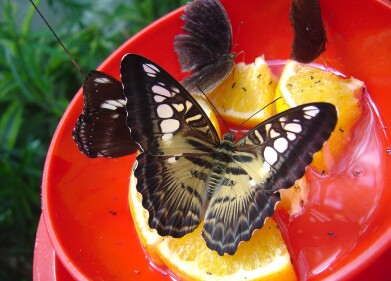Environmental Laboratory
Light Pollution in the UK ‘Causing Spring to Come a Week Earlier’
Aug 07 2016
A new report on the effect of light pollution on the phenology of plant life in the UK has revealed that night-time lighting in urban areas may be causing spring to arrive as much as one week earlier than normal.
The study, published in the journal Proceedings of the Royal Society B, compiled data gathered from citizen scientists over a 13-year period across the UK. For more than a decade, respondents were asked to report to the Woodland Trust with the dates they first noticed certain trees flowering in their area. By mapping the results against a light pollution diagram of Britain, the researchers were able to ascertain a direct correlation between the two events.
Keeping track of changing ecosystems
As a result of the growing industrialisation and urbanisation of our planet, various flora and fauna have had their life cycles heavily disrupted. Indeed, in the age of modern climate change, monitoring the weather is more relevant than ever, specifically as it applies to the plant and animal species with which we share the planet.
While headline-grabbing pollution tends to take the form of air, water or soil contamination, light pollution also has a knock-on effect on the environment. A link between light pollution and animal mating and feeding habits has already been established several times over, but this was the first study which concentrated on light pollution’s effect on plant life.
By collating the feedback from the thousands of citizen scientists who helped to make it possible, the authors of the paper concluded that ash, beech, oak and sycamore trees burst into leaf as much as 7.5 days earlier in built-up areas than in remote locations. This is thought to be a direct result of increased light pollution, which effectively tricks the plants into thinking it’s later in the calendar year than it actually is.
The long term effect of light pollution
Although the study only concerned itself with woodland trees species, the experts behind it believe that smaller shrubs and plants could be more susceptible to an early onset of budburst due to being subjected to streetlights and other manmade light sources.
Furthermore, this early budburst would affect not only the plant kingdom, but also the feeding, mating and sleeping cycles of the various birds, insects and other animals which call them home. As such, the increased industrialisation of man could have an irreversible and unpredictable effect on the Earth and all of its creatures.
“Analysis of Nature’s Calendar data suggests that increased urbanisation is continuing to put pressure on the natural world, in ways that we could not have foreseen,” explained Dr Kate Lewthwaite, citizen science manager for The Woodland Trust.
“As the seasons become less and less predictable, our native wildlife may struggle to keep up with fluctuations that affect habitats and food sources. Hopefully this research will lead to new thinking on how to tackle such issues, and will help influence future development decisions.”
Digital Edition
AET 28.2 April/May 2024
May 2024
Business News - Teledyne Marine expands with the acquisition of Valeport - Signal partners with gas analysis experts in Korea Air Monitoring - Continuous Fine Particulate Emission Monitor...
View all digital editions
Events
Jul 10 2024 Birmingham, UK
Jul 21 2024 Cape Town, South Africa
Australasian Waste & Recycling Expo
Jul 24 2024 Sydney, Australia
Jul 30 2024 Jakarta, Indonesia
China Energy Summit & Exhibition
Jul 31 2024 Beijing, China


















